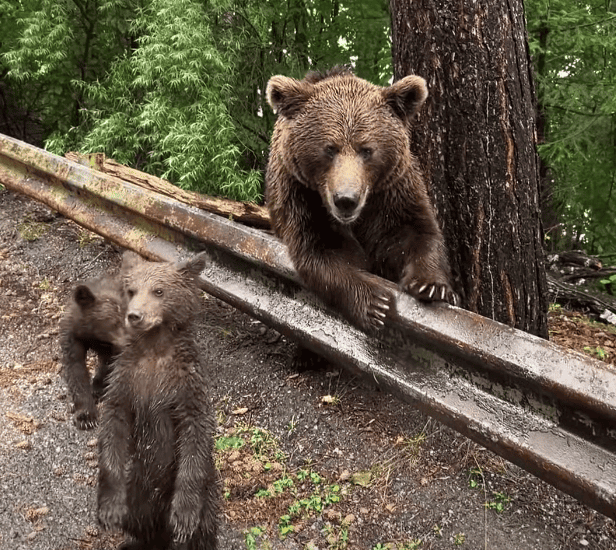Prepare for a dose of pure joy as bear cubs and humans share snack-time. This video captures the essence of interspecies connection. Giving us a show of human and animal bonding. Get ready to smile while watching this incredible connection.
A Bear-y Sweet Encounter
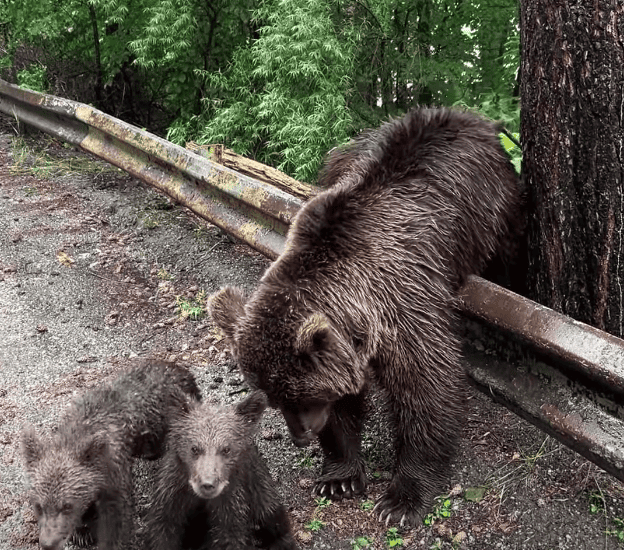
It all started when humans offer treats to the curious bear cubs on the side of the road. With each shared snack, the barriers between species melt away, replaced by laughter. This is an example of how good food can almost fix anything!
Bear-ly Believable Moments
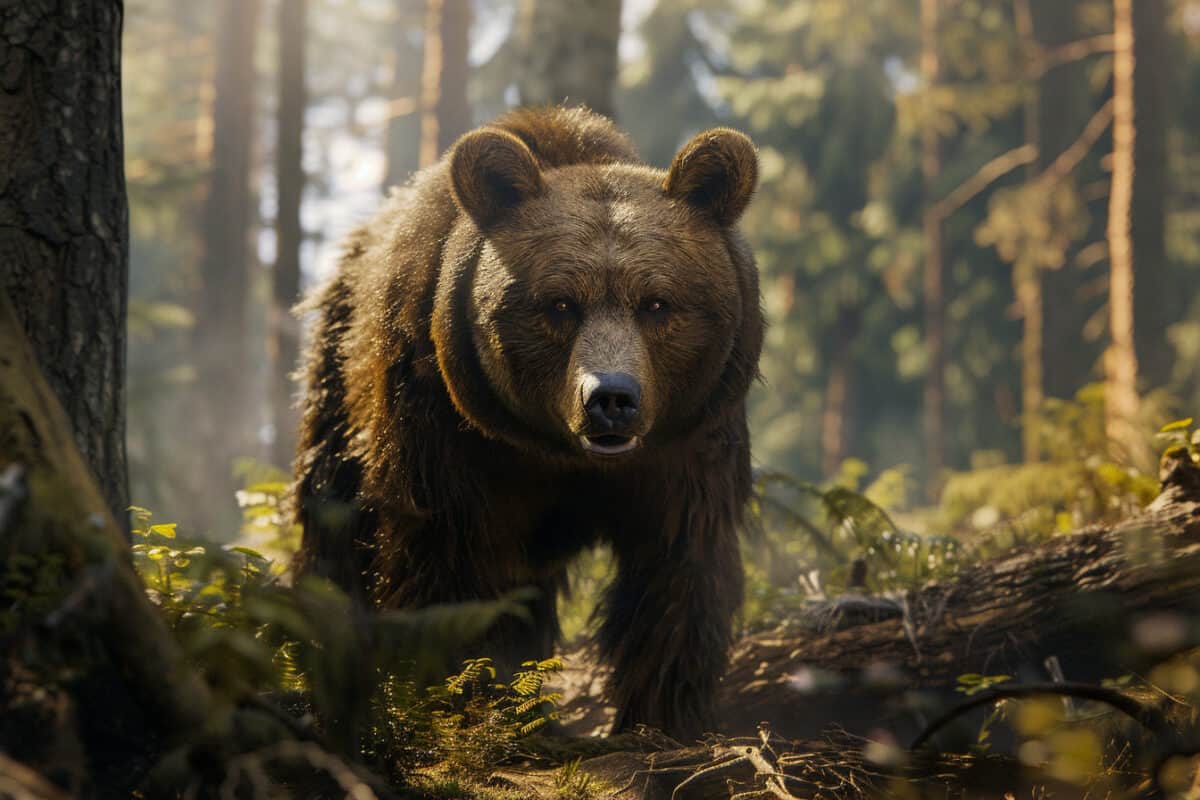
From paw swipes to attempts at catching flying treats, the captured scene is hilarious. Proving a universal language of food—bringing together even the most unlikely of friends! Who knew that a simple snack could bridge the gap between bears and humans?!
The Bear Essentials of Friendship
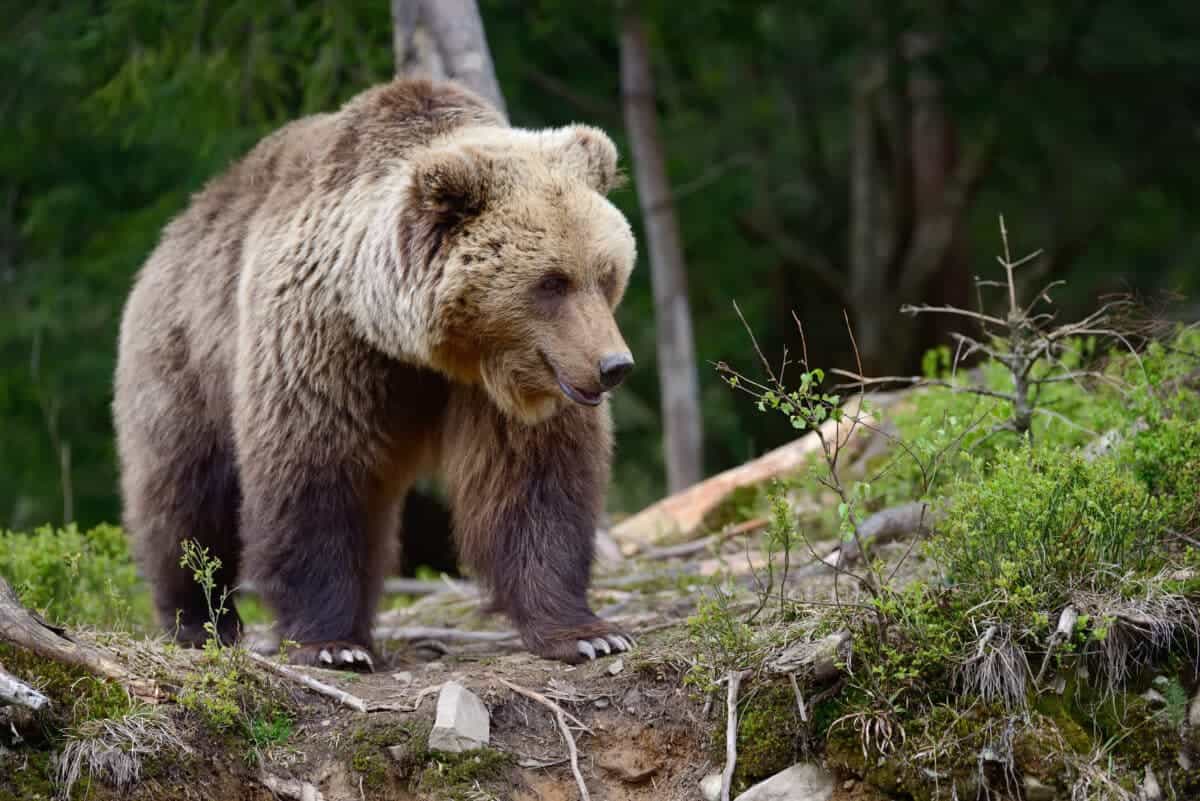
As the cubs and humans exchange snacks, it’s proof that friendship can know no bounds. Whether furry or not, we all crave connection and companionship! After all, isn’t sharing snacks the cornerstone of any great friendship?
Understanding Brown Bear Reproduction and Maternity Care…
1. Mating Season
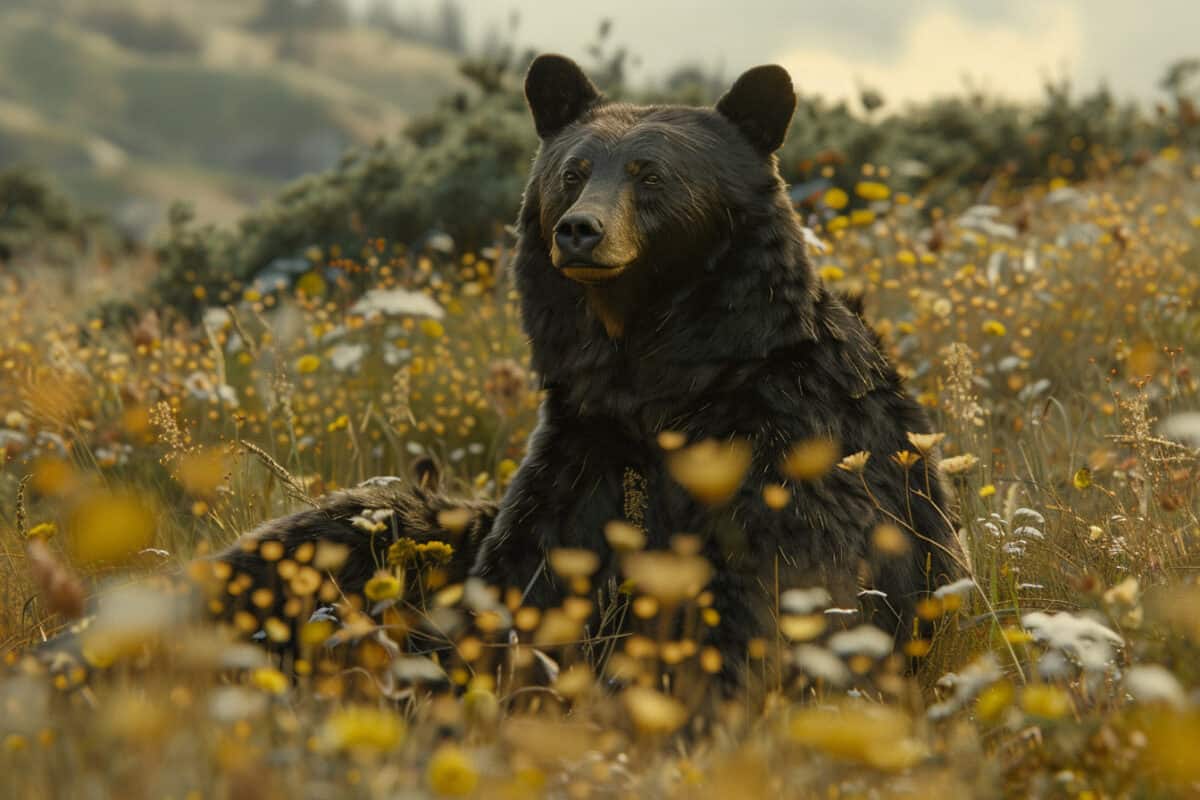
Brown bears mate in late spring or early summer. Males compete for the attention of receptive females through displays of strength and dominance.
2. Courtship Rituals
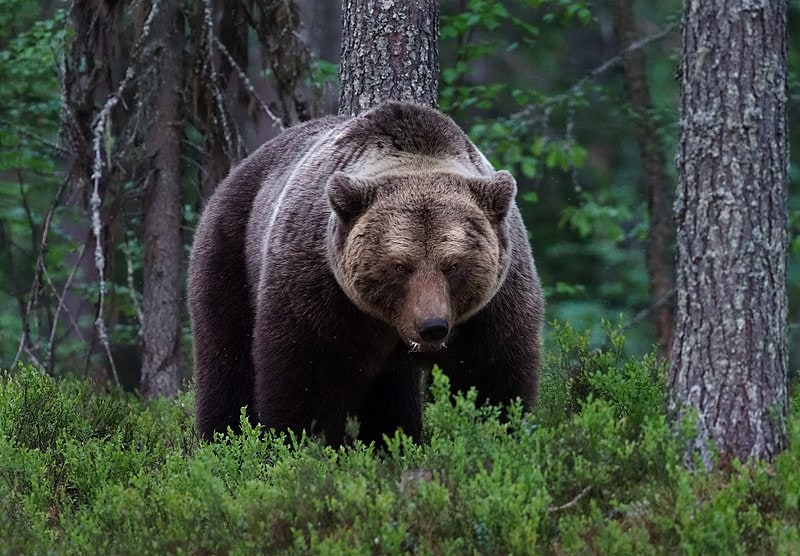
Courtship among brown bears often involves vocalizations, posturing, and physical interactions.
3. Gestation Period

After successful mating, female brown bears have a gestation period lasting approximately 6-8 months. This is when they prepare dens for the birth of their cubs.
4. Denning Behavior
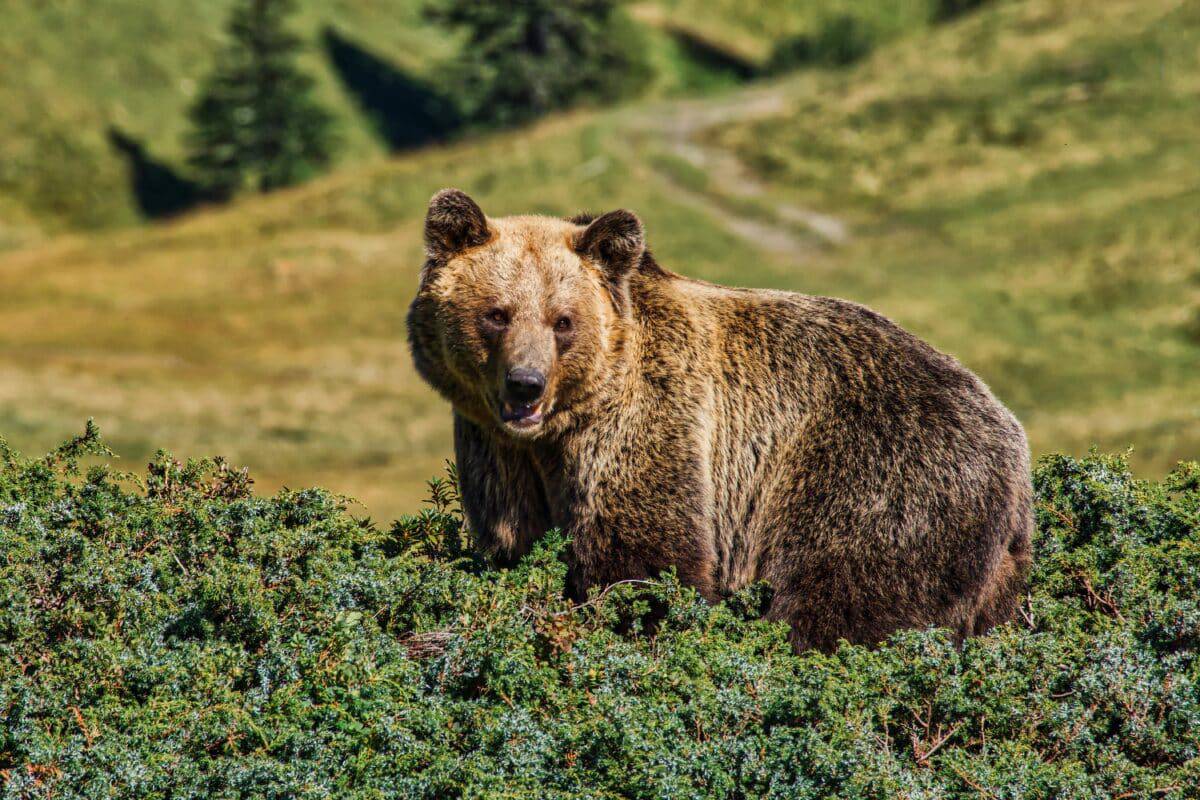
Female brown bears look for quiet dens spaces. Usually located in dense vegetation or natural cavities.
5. Birth of Cubs
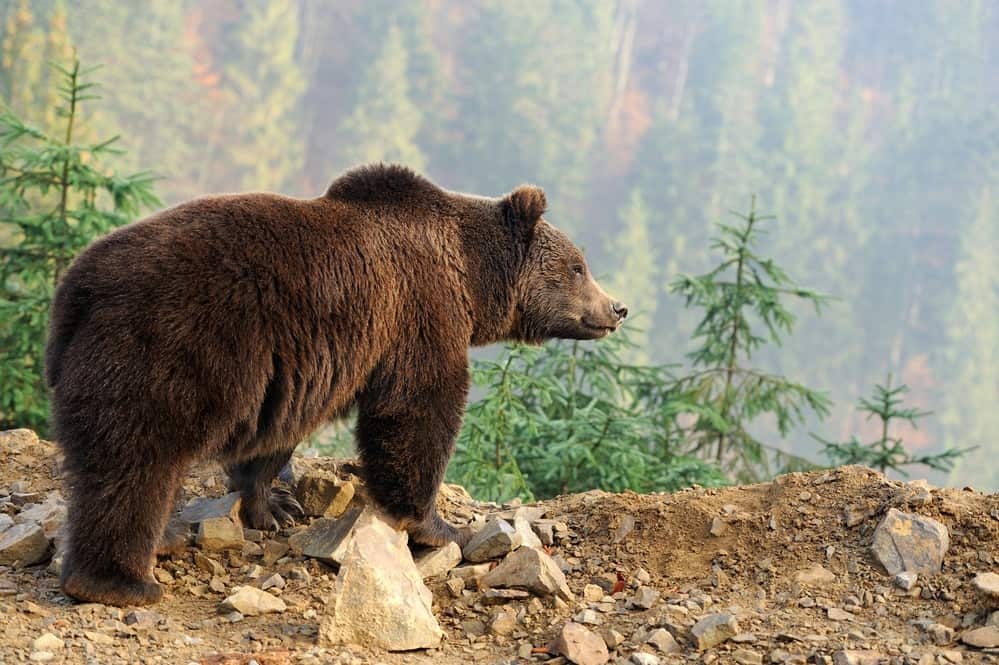
In January or February, Brown bear cubs are born in the den during the winter months. The litter sizes range from one to four cubs.
6. Maternal Care
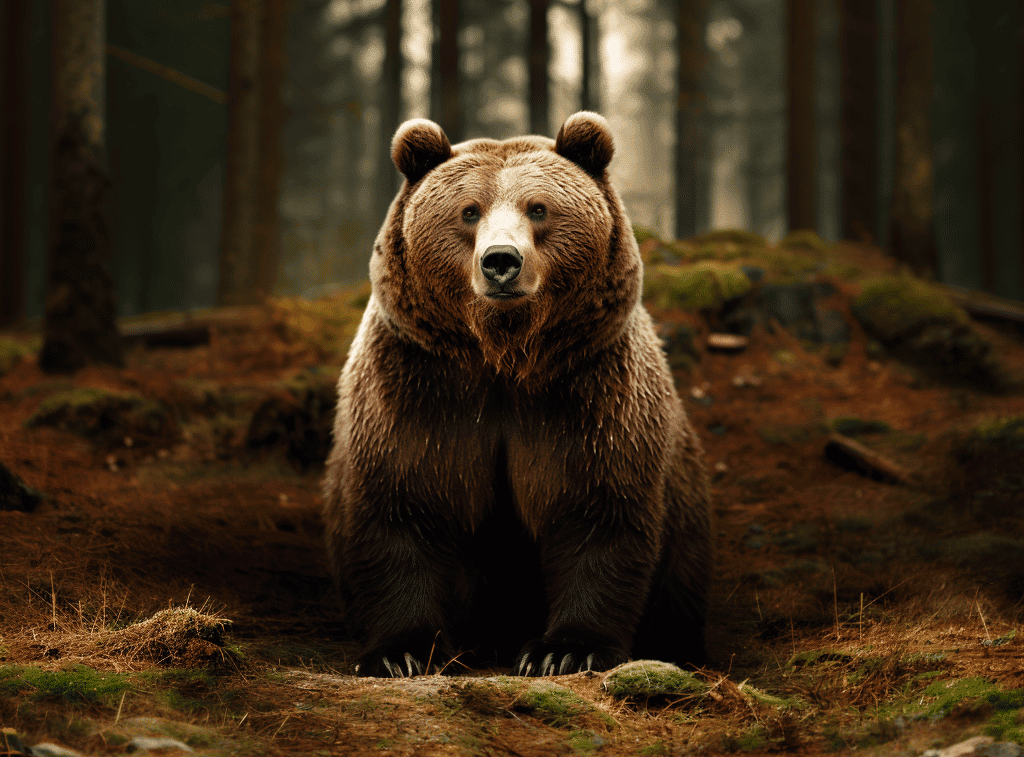
Mother brown bears exhibit remarkable devotion to their cubs. They nurse them and provide protection within the den for several months. This takes place until they are strong enough to venture outside.
7. Weaning and Learning
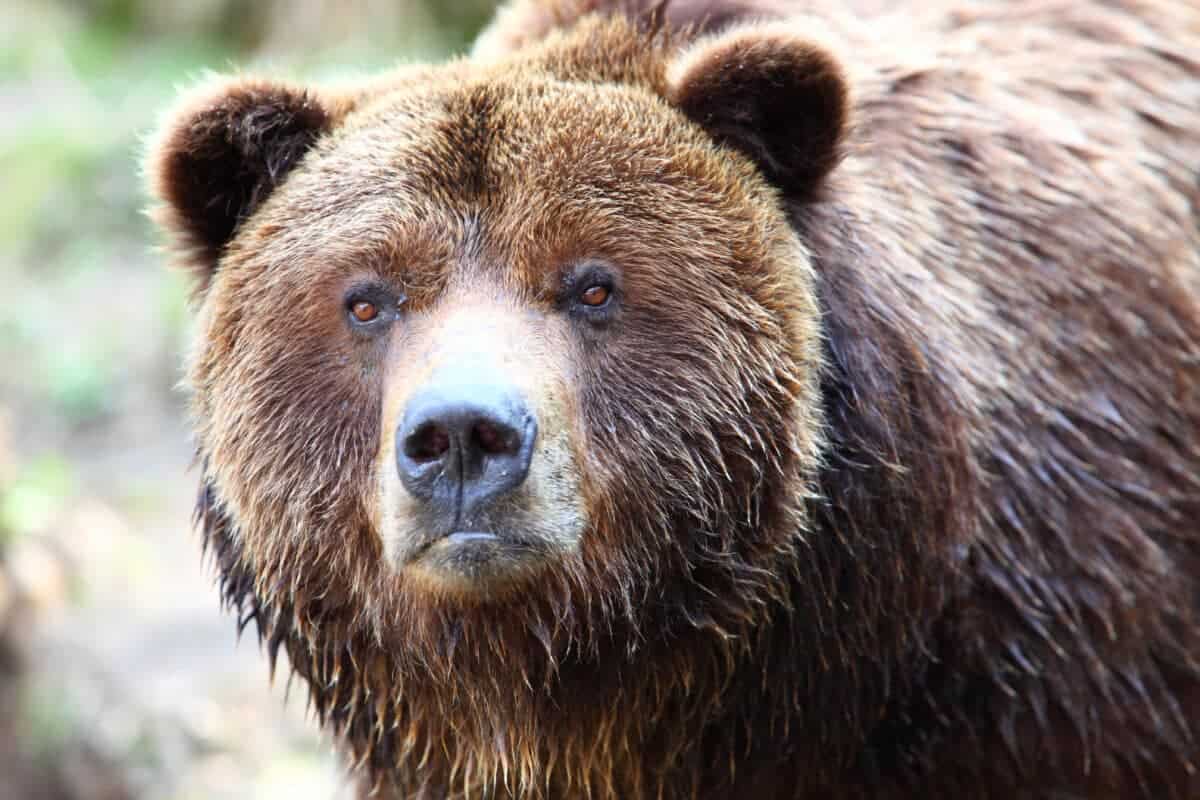
As the cubs grow, they transition from nursing to eating solid foods. So, they learn survival skills from their mother, including foraging, hunting, and navigating their surroundings.
8. Family Bonds
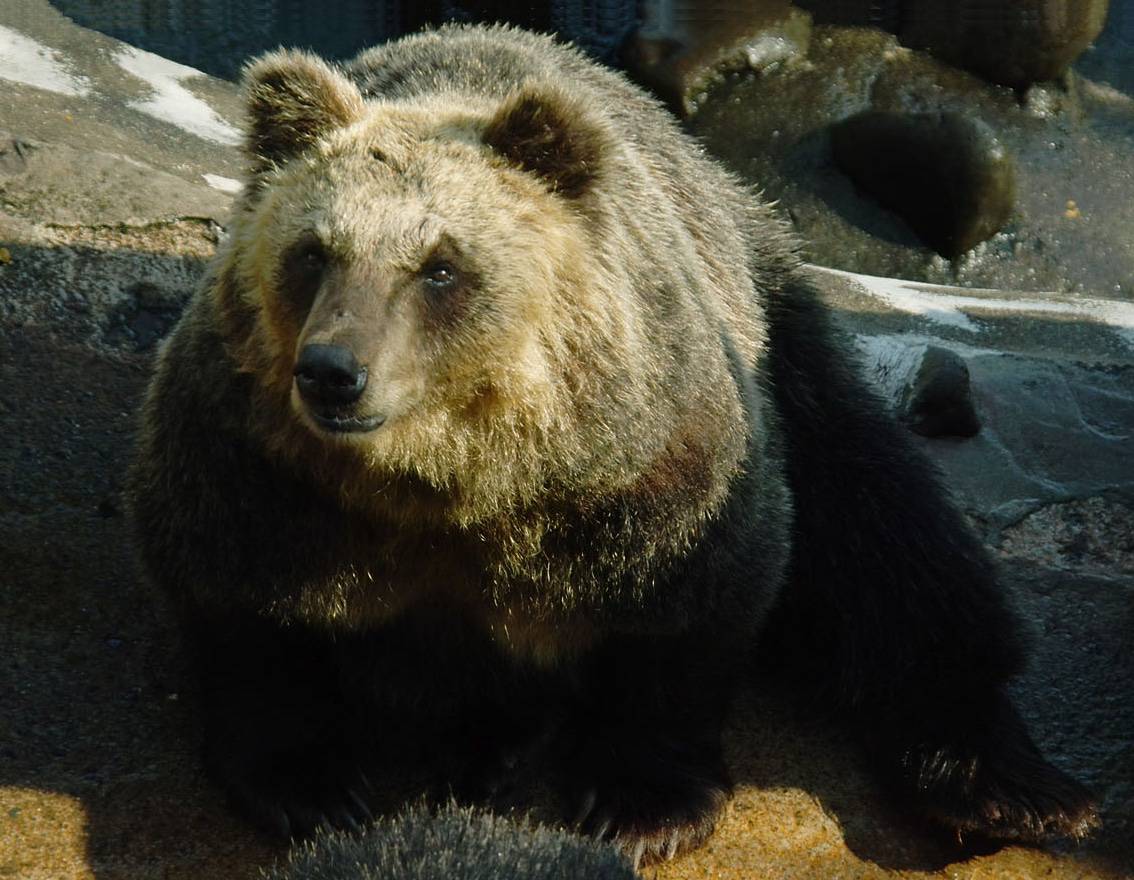
Brown bear families stay together for the first two to three years of the cubs’ lives. The mother teaching her babies important life lessons.
9. Conservation Challenges
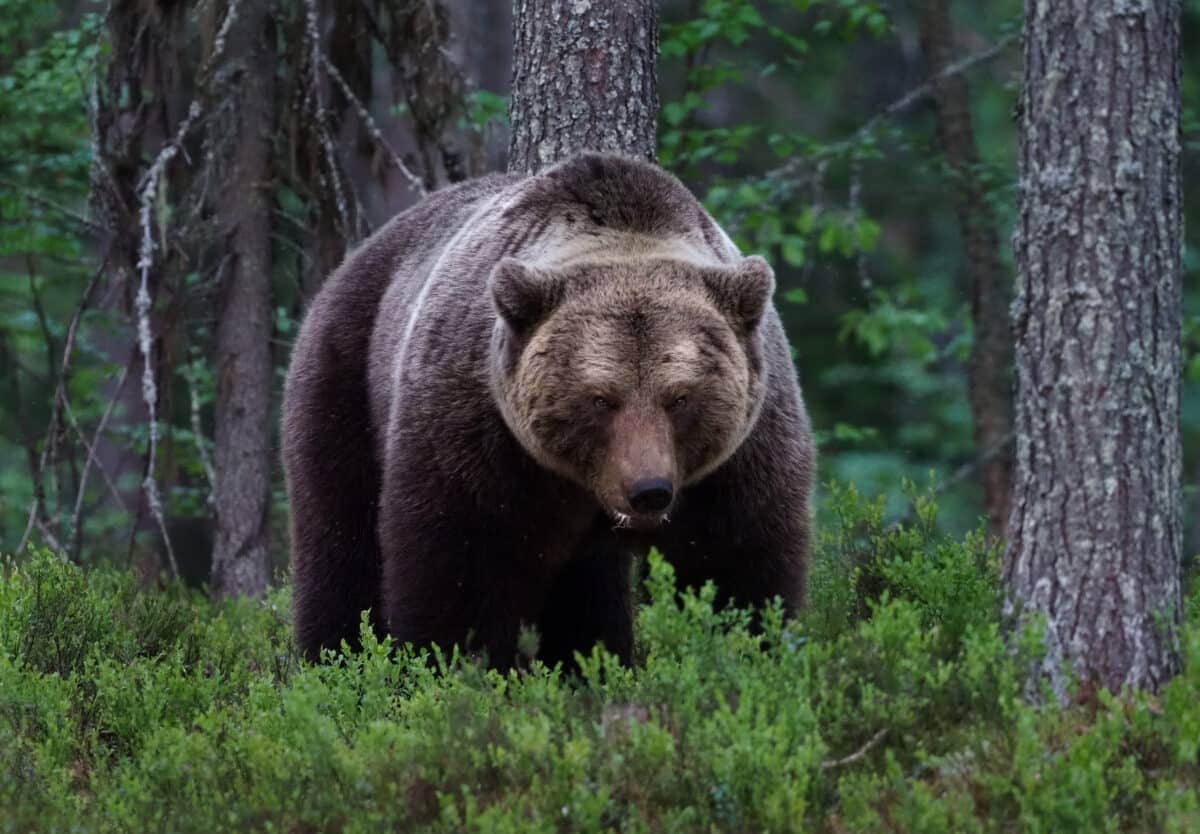
Brown bears face numerous threats. This includes habitat loss, human-wildlife conflict, and poaching. Conservation efforts are making sure their is long-term survival of these majestic giants.
Next up, let’s take a look at the brown bears physical characteristics…
Size and Strength
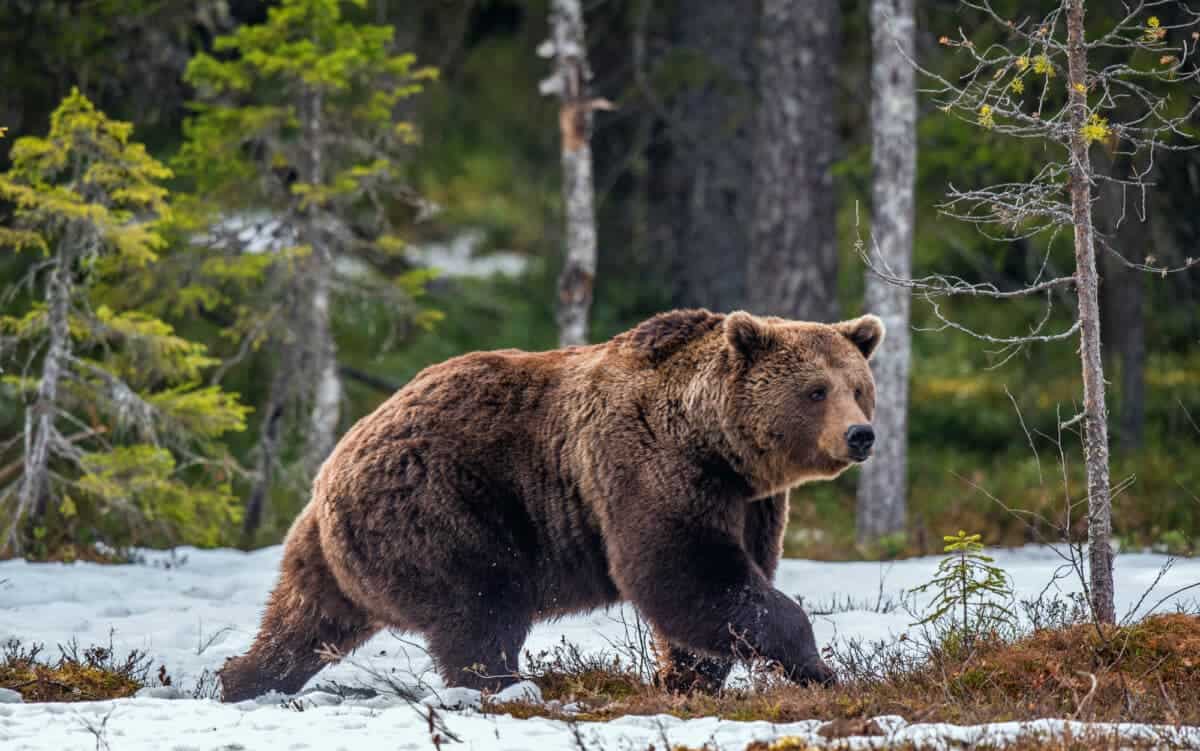
Brown bears are one of the largest terrestrial carnivores. Adult males weigh between 300 to 1,500 pounds. They are 10 feet tall when on their hind legs.
Coat Color and Variation
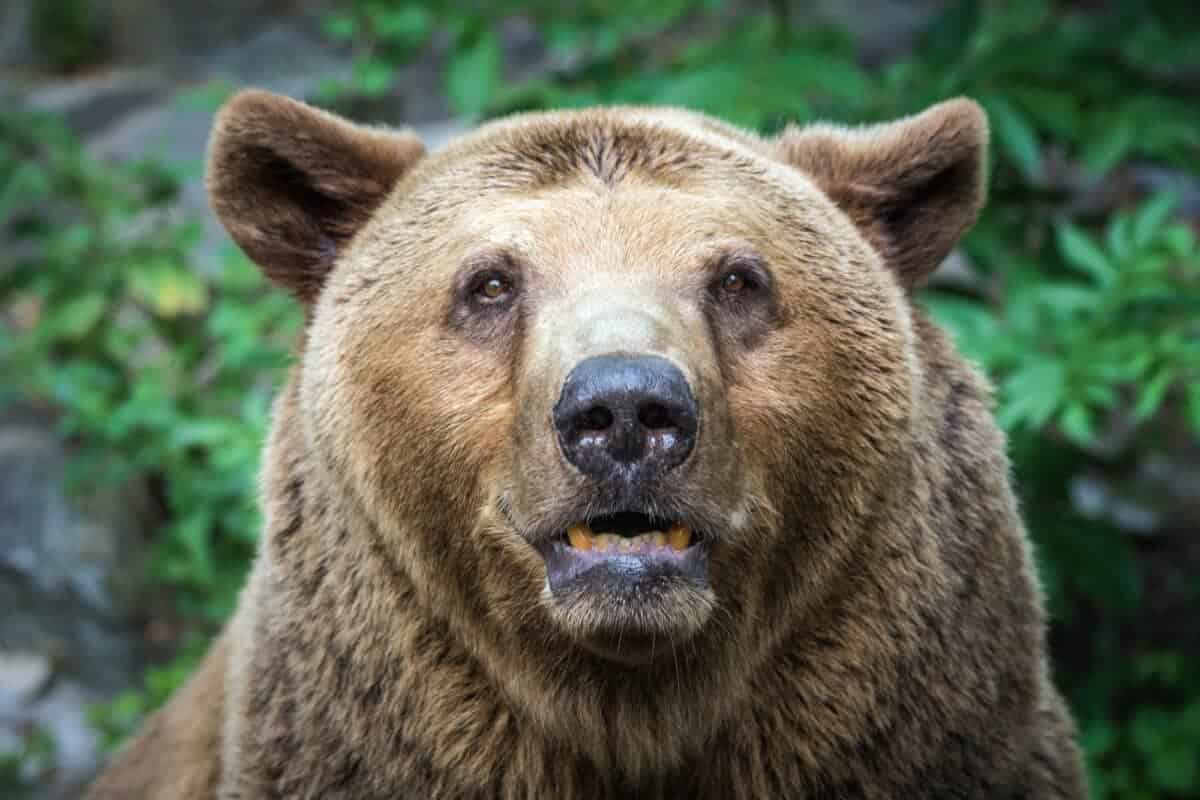
Despite their name, brown bears exhibit a wide range of coat colors! This includes shades of brown, black, blonde, and even white. This variation in coloration is influenced by factors such as diet, genetics, and geographic location.
Hibernation Behavior
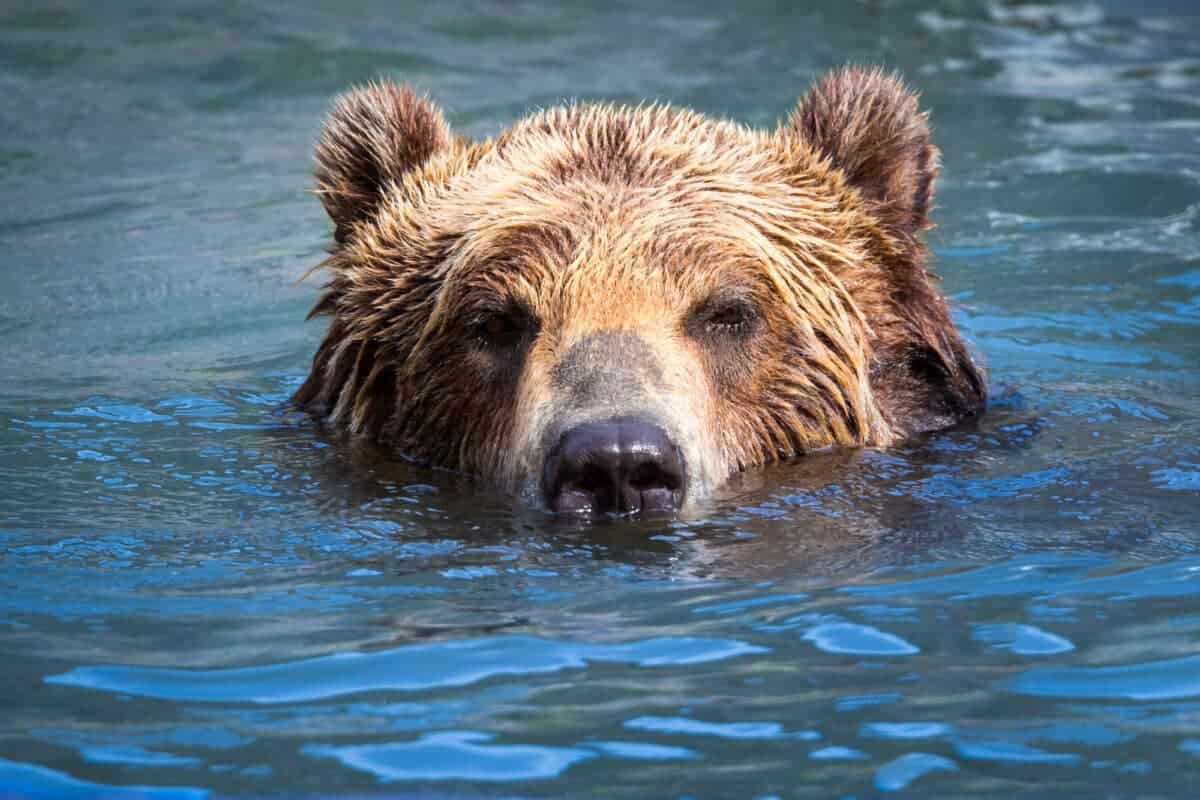
Brown bears have ability to hibernate during the winter months. They become dormant to save energy when food sources are scarce. During hibernation, their heart rate and metabolism slow down. This allows them to survive without food for long periods.
Omnivorous Diet
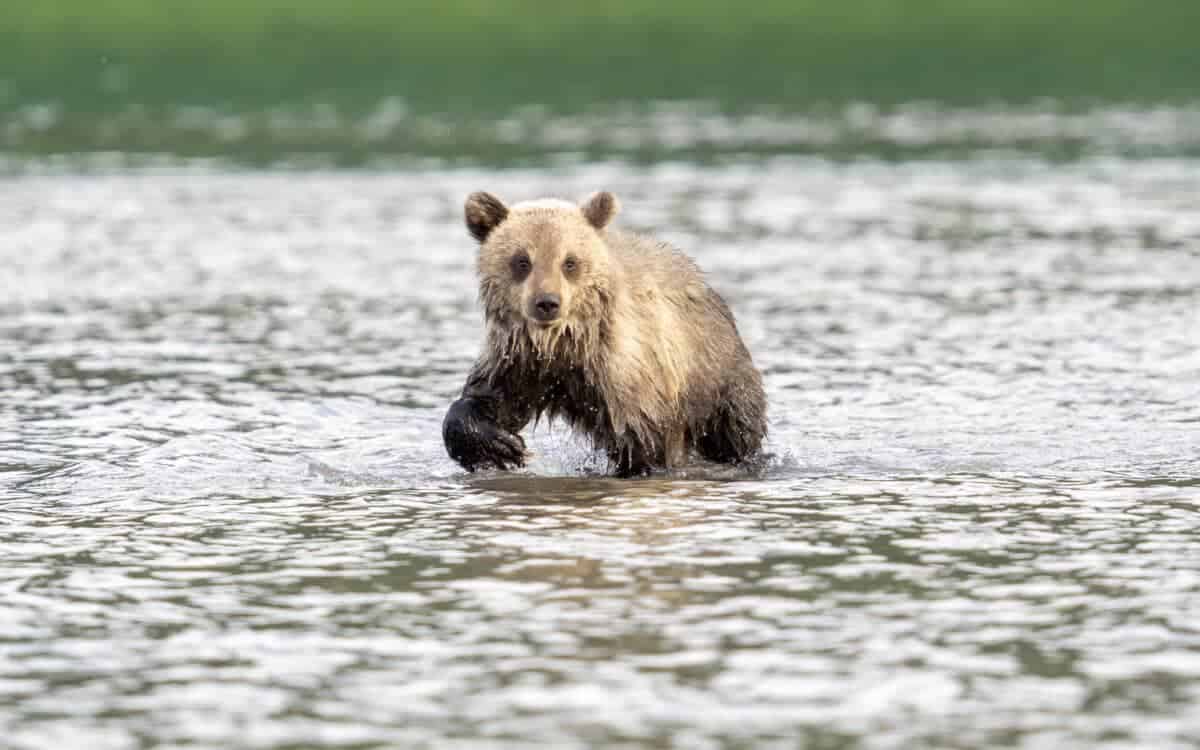
Brown bears are omnivores. They consume a diverse diet consisting of both plants and animals. Their diet includes berries, nuts, grasses, roots, insects, and fish. Sometimes larger prey too. Such as deer or elk.
Solitary Nature
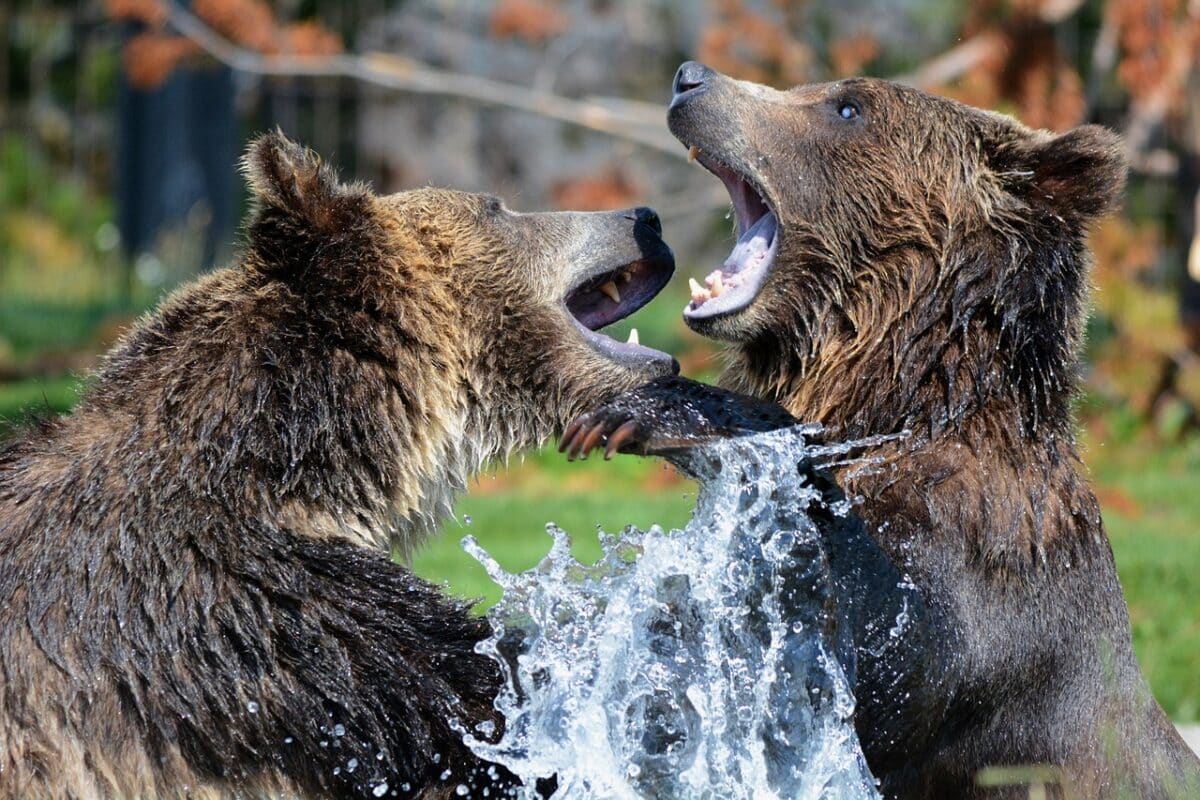
While brown bears live in areas with high food sources. Such as salmon spawning grounds, they are generally solitary animals. Adult bears roam and forage alone. Unless it is during mating season or when raising cubs.
Territorial Behavior
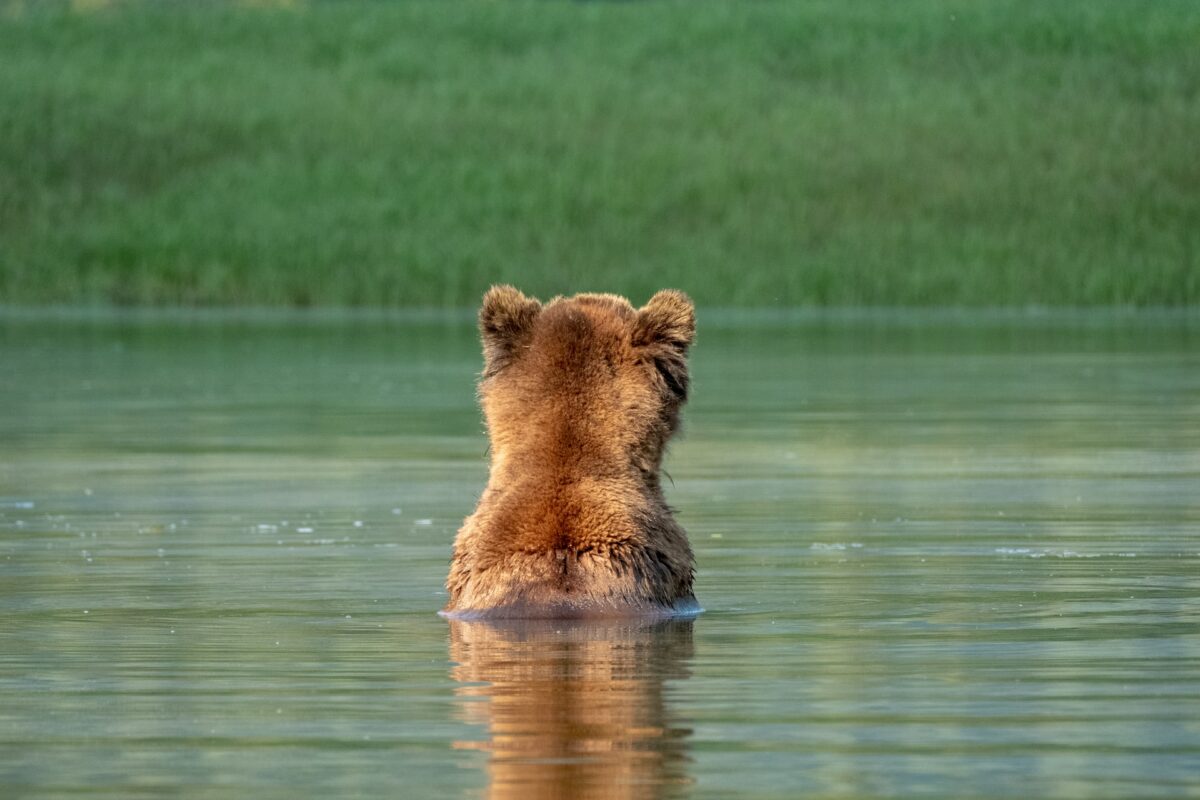
Brown bears have territorial behavior. The dominant males defend large home ranges which have great feeding and mating areas. These territories overlap with other bears too, which causes conflicts over resources.
Intelligence and Adaptability
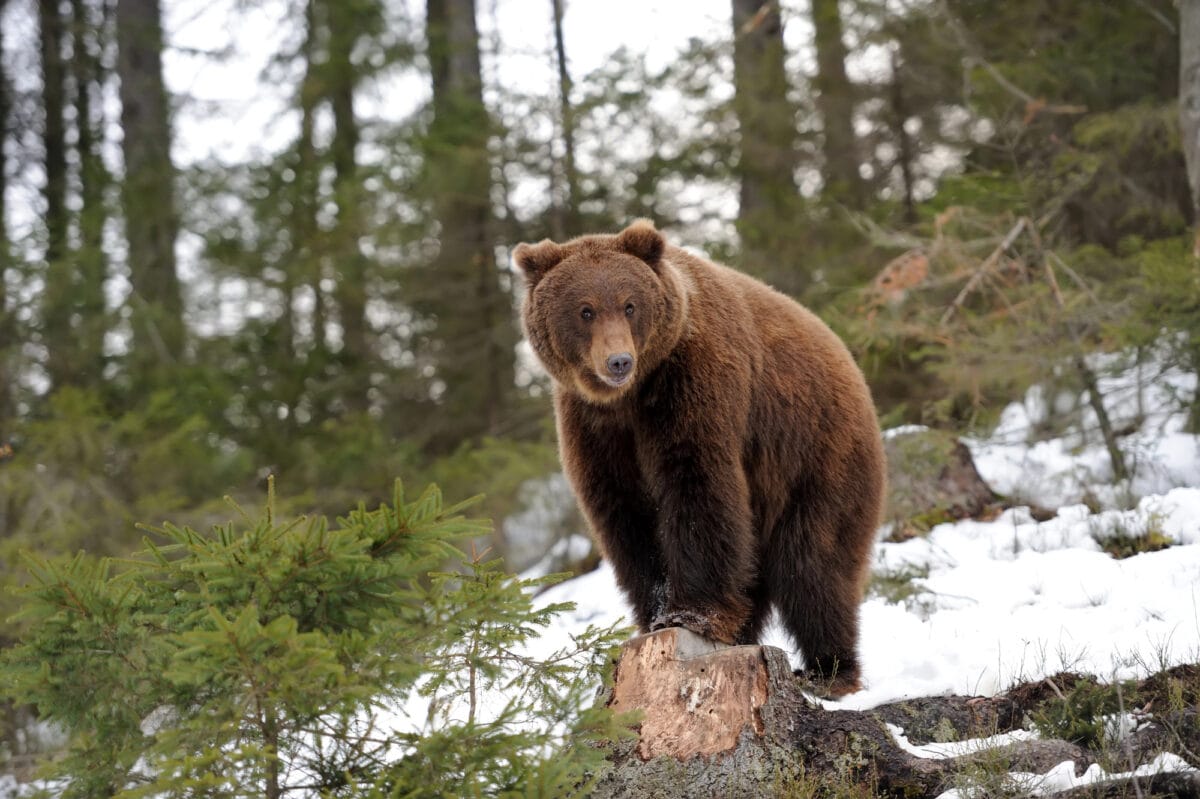
Brown bears are intelligent and adaptable animals. They are capable of learning complex behaviors for food. They have been seen using tools, such as rocks, to access food sources.
Bottom Line
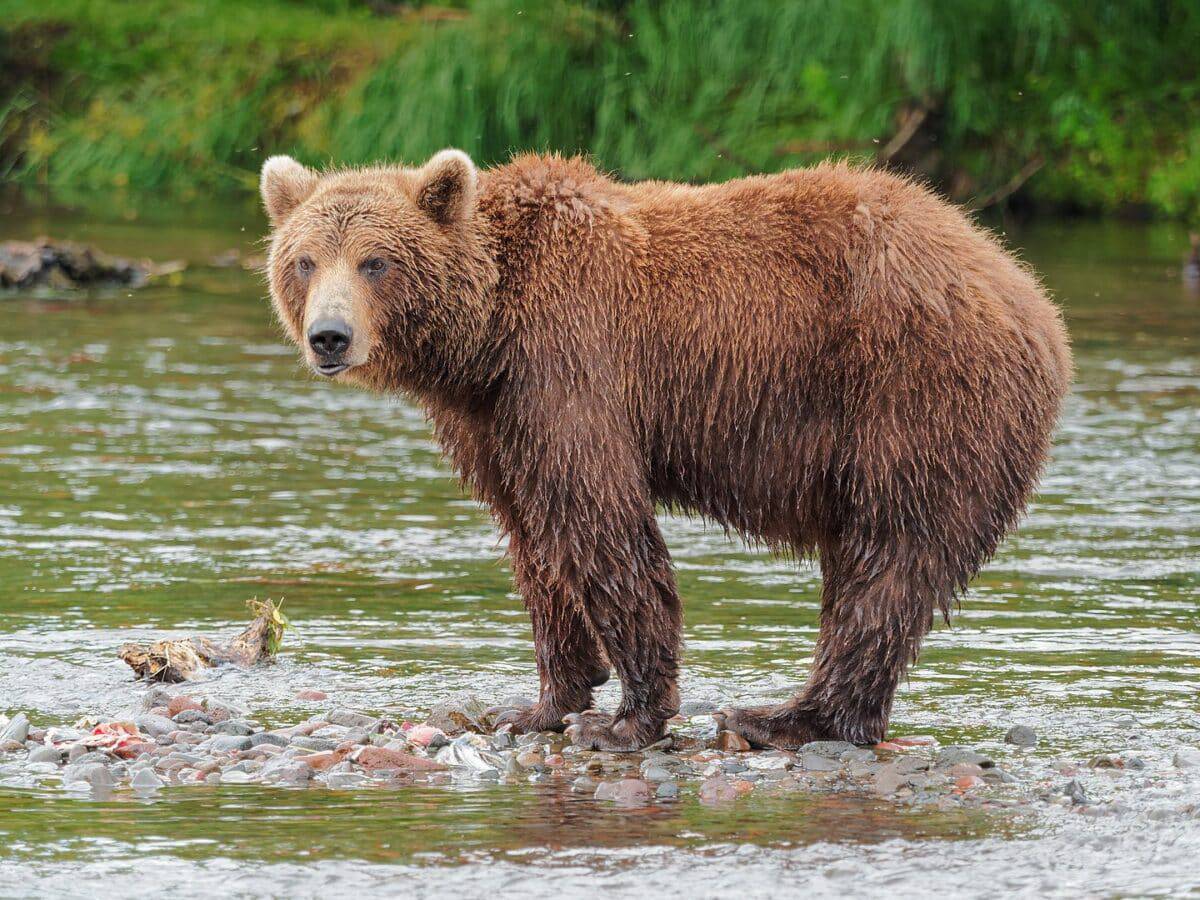
In a world often divided by differences, the simple act of sharing snacks brings us together in unexpected ways! So, let’s live our lives to the fullest and don’t let the small things get you down.
Thanks for reading along! For more check out our related article link below.
Next up:
Join our Forum for free today!

- Huge Pet Bison Breaks Into House - July 22, 2024
- Giant Black Bear Surprises Beachgoers by Emerging from the Ocean in Florida - July 22, 2024
- Brave Man Plays Instrument While Huge Bear Caresses His Shoulder - July 22, 2024

